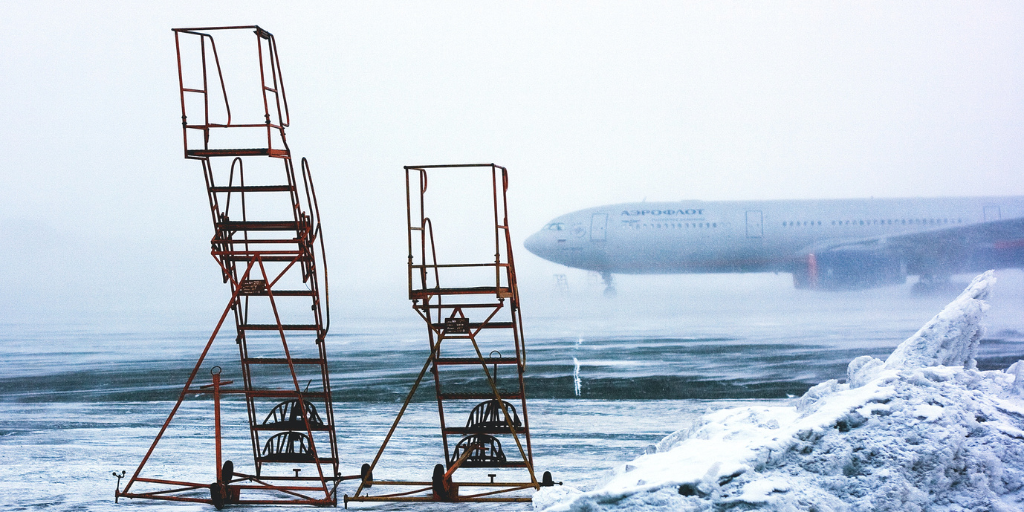Travel Disruption: Heathrow flight disruptions today and advice on delays and cancellations

If you're experiencing Heathrow delays or your flight is impacted by severe weather or industrial action, there are a few things you'll need to know.
Can you claim compensation for your delays? Use our Compensation Calculator. Find out if you can claim for flight delays due to bad weather, like snow to fog, or from industrial action; as well as how much compensation you may be entitled to by using our Compensation Calculator.
Stay up-to-date with what's going on with the Heathrow Airport weather disruption.
The main information contact number for Heathrow Airport is: 0844 335 1801*. If you are using a textphone, please use: 0844 571 7410*
*Calls to this number will cost up to 7p per minute plus your phone company's network access charge.
Use our Compensation Calculator to find out what you could be entitled to in compensation from your airline.
Bear in mind, any flights delayed for less than 3 hours are unlikely to provide any compensation and you'll have to contact your travel insurance provider or the airline separately to make a claim.
Discovering a significant flight delay upon arriving at the airport can be incredibly frustrating. But don't fret – keep reading to find out if you're eligible for assistance, such as free calls, food, accommodation, or even compensation in cash.
In practical terms, if you're departing from or arriving in the UK, you're covered by the Denied Boarding Regulations, regardless of the airline. The criteria are as follows:
- Your departure is from the UK, regardless of the airline
- You're arriving in the UK with a UK or EU airline
- You're arriving in the EU and you were flying with a UK airline
However, if you're flying with a
non-UK airline and landing in a non-EU country, you might not receive the same level of assistance. In this case, you'll need to refer to the airline’s
Conditions of Carriage to understand their duty of care.
Can You Claim Compensation for Flight Delays?
Your eligibility for compensation
depends on both the duration of your flight and
the length of your delay. Your situation must fall under one of the following categories:
- A flight covering a distance of up to 1,500km with a delay of at least 2 hours
- A flight spanning between 1,500km and 3,500km with a delay of at least 3 hours
- A flight journey of over 3,500km with a delay of at least 4 hours
As long as you fit into one of the aforementioned categories,
you are entitled to:
- Receive a "means of communication", typically covering phone call expenses
- Be provided with complimentary food and beverages
- Obtain free hotel accommodations and transportation between the hotel and the airport, if the delay extends to the following day
Delayed Flight: 5 Hours or More
You can opt out of your flight if it's delayed by 5 or more hours, regardless of fault. This applies whether it's the airline's responsibility or an external issue.
If you choose not to fly, the airline must:
- Provide a full refund.
- Refund for connected or return flights if they were booked together.
- Even if you're en route back to the original departure airport.
Inform the airline as soon as you decide to skip the flight.
Financial compensation is due as follows:
- For flights up to 1,500km delayed by more than 3 hours – £220.
- For flights over 3,500km delayed by between 3 and 4 hours that are between UK/EU and non-UK/EU airport – £260.
- For flights between 1,500km and 3,500km delayed by more than 3 hours – £350.
- For flights over 1,500km that are within the UK/EU delayed by more than 3 hours – £350.
- For flights over 3,500km delayed by more than 4 hours that are between a UK/EU and non-UK/EU airport – £520

Flight Cancellations: Your Entitlement
In the event of a flight cancellation, the airline
must offer you the choice of either a refund or an alternative route. You're also entitled to free meals and phone calls, which the airport is responsible for providing.
However, compensation won't apply if:
- You were informed about the cancellation at least two weeks before your flight.
- You were informed one to two weeks before, AND the alternative flight gets you to your destination no more than 4 hours later and you board within 2 hours of the original time.
- The cancellation was due to extraordinary circumstances.
- You were informed less than 8 days before departure, were rerouted leaving an hour before your original time, and reached your destination within 2 hours later.
- Your flight departed and landed outside both non-UK and EU airports, or you traveled from a non-UK or EU country using an airline from outside both regions.
Compensation for cancellations varies based on distance and timing. Below are compensation rates for cancellations occurring 7/14 days before departure. Note that "leaving earlier" means the rerouted flight departs slightly ahead, ensuring you reach your destination sooner. If this still results in a delay, you might qualify for compensation.
- Flights up to 0-1500km: £110 if departing over 2 hours early and arriving within 2 hours, or £220 if arriving 4 hours later or departing over 2 hours early and landing 2 hours later.
- Flights 1500 - 3500km: £170 if departing over 2 hours early and arriving up to 3 hours late, or £350 if arriving over 4 hours late, or departing over 2 hours early and arriving 3/4 hours late.
- Flights over 3500km: £260 if departing over 2 hours early and arriving within 4 hours, or £520 if arriving over 4 hours late.
All distances are measured to the
final destination.
You'll get the following compensation for flight cancellations if it was cancelled at least
7 days before departure.
- For flights up to 0-1500km miles you'll get £110 if it leaves more than 1 hour before and lands within 2 hours. But it will be £220 if it lands 2 hours later than the intended time.
- For all longer flights ranging from 1500 - 3500km you'll get £170 if the flight leaves more than 1 hour before and it lands up to 3 hours late. But it will be 350 if it lands more than 3 hours late.
- For flights that are more than 3500km+ you'll get £260 if it leaves more than 1 hour before and it lands within 4 hours. But it will be £520 if it lands more than 4 hours late.
Compensation, paid as
cash, bank transfer, or cheque, may also come as travel vouchers, provided the passenger agrees.

Reaching your destination via alterative means
There are three options if you're trying to get around Europe without flying.
For example, if you're eager to get away, you could hire a car and drive to your destination. Some car hire providers will let you drive your hired vehicle across Europe and drop it off in your destination country. Bear in mind, companies can sometimes charge extra for letting you take the car across country borders and charge you for crossing back again.
Other choices are public transport links. Another mode of transport would be to take the ferry if you are trying to get to Europe or, if you're trying to get to France or Belgium, you could try and take the Eurostar. The Eurostar is a train which travels from London St Pancras train station to Paris and Brussels.
However, just because London Heathrow isn't flying, doesn't mean the rest of the UK isn't. So if you're going further afield than Europe, say you're flying to Bali or New York, local ferries and the Eurostar won't really help you. Therefore, if you are travelling internationally and you cannot get a flight with your airline from Heathrow airport you should try and get a flight from any airport within the UK.
Top tips when talking to the airline's customer services provider about your flight delay:
- Where possible, call them ahead of time or check their website or social media for updates. Check your booking confirmation to double-check which airline you are flying with and give them a call for the latest update or what the next steps are. It is best to check flight details with your airline as soon as possible; if your flight is cancelled you may be advised not to travel to the airport.
- Keep checking for up to date information about the airport by checking their Twitter or by calling your airline directly.
- If your airline cancels your flight the airline must give you the option of rebooking an alternative flight; either as soon as possible, or at a later date. If no flight is suitable you can request a refund.
- If the flight is cancelled due to reasons out of the airline's control they will not pay for cancellation of your accommodation or cancellation of any other arrangements. However, if you have taken out a comprehensive travel insurance policy when you booked your holiday, any Heathrow delays should be covered and you should be able to claim back most of the expenses incurred from cancelling the holiday from your travel insurance provider. Please check with your insurers to see if they can help.
- Try to stay calm - you're in safe hands, the airlines know what they are doing and if your flight has been delayed or cancelled it is for your own safety! There's nothing to be achieved by getting angry at any airline representative. As they say, don't shoot the messenger.
Heathrow Delays - Why is my flight delayed?
To find out what the Heathrow Airport weather warnings are today, and what they mean for your flight, we recommend finding your flight details with our online Flight Departures Board. Often Heathrow will warn of destination closures, so if you're flying to Bali where there's a volcanic ash cloud, your flights will be cancelled. Alternatively, weather warnings will be in relation to the UK, such as Storm Doris in February 2017. Our online departures board will give you the most accurate times for your flights and any Heathrow disruptions today.
As for why your specific flight is delayed, stay up to date on your airlines' social media, website or local news.
Likely causes for Heathrow delays are weather disruptions, technical issues or strike action; but really Heathrow Airport weather warnings could come down to a whole array of causes, both in the UK and at your destination. The weather might not be suitable for flying, see how each weather type affects flying below for snow, rain, wind and fog. Alternatively, if you're receiving news that your flight is delayed for other reasons, it's possible there are strikes, a technical error or in exceptional circumstances, the airline may no longer be flying.

Get compensation for 1+ hour flight delays.
Did you know that
Colibra
offer fair compensation for flights delayed by at least an hour, regardless of the reason? All you have to do is download their app, register before you fly and upload your boarding pass, all for free. Should your flight then be delayed by an hour or more, Colibra will compensate you within 24 hours for the inconvenience.
Why does snow disrupt flights?
One of the most common causes for Heathrow delays is when it's snowing is that every plane must be completely de-iced before it can take off. This is because any ice on the plane affects the wings and fuselage which makes the planes more difficult to control. In severely cold temperatures, planes must take off as soon as they are de-iced to prevent the ice building up again. Therefore, this causes delays as de-icing cannot be done in advance at the start of the day.
Another major cause of Heathrow Airport weather warnings and subsequent delays is when the runways and roads are covered in precipitation or ice. Heathrow has to be cleared of any snow and ice to get as many flights out as soon as possible which is usually the airport's responsibility, i.e. Heathrow's disruption team.
If too much heavy snow has settled on Heathrow runways, then the airport may have to be closed while the airport is cleared of all snow. Planes cannot take off when there is any snow on the ground.
Larger airports like Heathrow and Gatwick are more impacted by severe weather than smaller airports as they have so many flights that a delay of a few hours causes a huge backlog of flights. On the other hand, they often have bigger and more efficient teams to deal with Heathrow delays and flight disruptions because they are bigger and dealing with more traffic.
The issue being if there are multiple delays at Heathrow due to weather disruptions, planes will have to wait their turn to use the runways and begin your holiday. Just because disruption teams are fast, doesn't mean the whole process is going to be an instant fix. Often if Heathrow Airport gives a weather warning, officials may decide it's not worth clearing all terminal runways of snow, if snow is forecast to continue falling over a long period of time.
Alternatively, it's not the UK weather at all and the airport weather warnings are coming from your destination country. While we have a very changeable weather system in the UK, more extreme weathers can be found internationally. For example, some airports may announce weather warnings because of volcanic ash, meaning you can't fly from Heathrow because you cannot land on the other side, Bali and Iceland frequently experience this. Other examples include hurricanes around Florida and neighbouring southern states of America which cause delays from Heathrow.

More weather warnings: Why does wind, rain and fog disrupt flights and cause delays at Heathrow?
When it comes to flying a plane, pilots and flight crews aren't just looking with their eyes. Pilots have systems to tell them their altitude, radar, temperature gauge and wind speeds - even being in constant contact with the Air Traffic Control team back at Heathrow to let them know exactly what's going on in the skies.
So why does rain and fog cause so many airport weather warnings and have that much of a difference to Heathrow delays? To begin with, the flight crew themselves have to get to the airport, just the same as you and all of their passengers. This means driving through fog and coping with the various accidents on public transport and the roads en route to work.
This is when you experience turbulence and the seat belt sign will come back on mid-flight. Wind probably causes the most hassle with take off, landing or if you're travelling in higher altitudes. There'll be a limit to how hard the plane's engines can work to maintain the same speed on a good day as they do when travelling against the wind or jet stream and whether it's safe to fly at all.
Despite all the specialist equipment onboard a plane, it's still pretty useful to see clearly with your own eyes. Flight crews will be more confident and probably more efficient when travelling on a clear day than when there are weather disruptions. While they may rely on Air Traffic Control and their plane's systems, you're more likely to experience fewer Heathrow disruptions and have a cleaner and fast flight on a nice day. At the end of the day, if it's not safe to fly, you won't be flying. Heathrow flight delays are there to keep you safe.
Why do strikes result in Heathrow delays?
Striking action can also lead to disruptions which although are usually localised to certain organisations and locations, can still affect your journey.
I need to get to the airport but there are major transport disruptions before I get there!
The key to avoiding these problems however lays simply in planning your journey effectively. Leave plenty of time to get to the airport, especially if you know there's snow or strikes forecast or check scheduled times the night before on things like Travel and Road Report sites, National Rail and Trainline.
And if you are taking the car to Heathrow airport, drive safely and remember these tips:
- Heathrow Airport weather warnings mean the surrounding roads will be affected too: it's not just about the airport
- Keep plenty of distance between you and the car in front in case they break suddenly or you hydroplane.
- Drive slowly to ensure they're always completely in control of their vehicle.
- If you start to slide on ice, steer into the direction you're going to regain control.
Stay up to date via Social Media
Keeping yourself informed about any Heathrow disruptions and delays will play a major part in streamlining your journey. Utilise news websites, travel apps, Twitter and radio so you're up-to-date with the latest news regarding your method of transportation which should help you avoid any problematic routes.
There can sometimes be cases where it just won't be possible for you to make your flight, for example, weather disruptions are so severe that it is unsafe for you to travel. In such circumstances where no one is really at fault, you should check your flight's status and speak to your airline as it's more than likely to be affected if the weather conditions are that bad, or alternatively look to your travel insurance for compensation.






